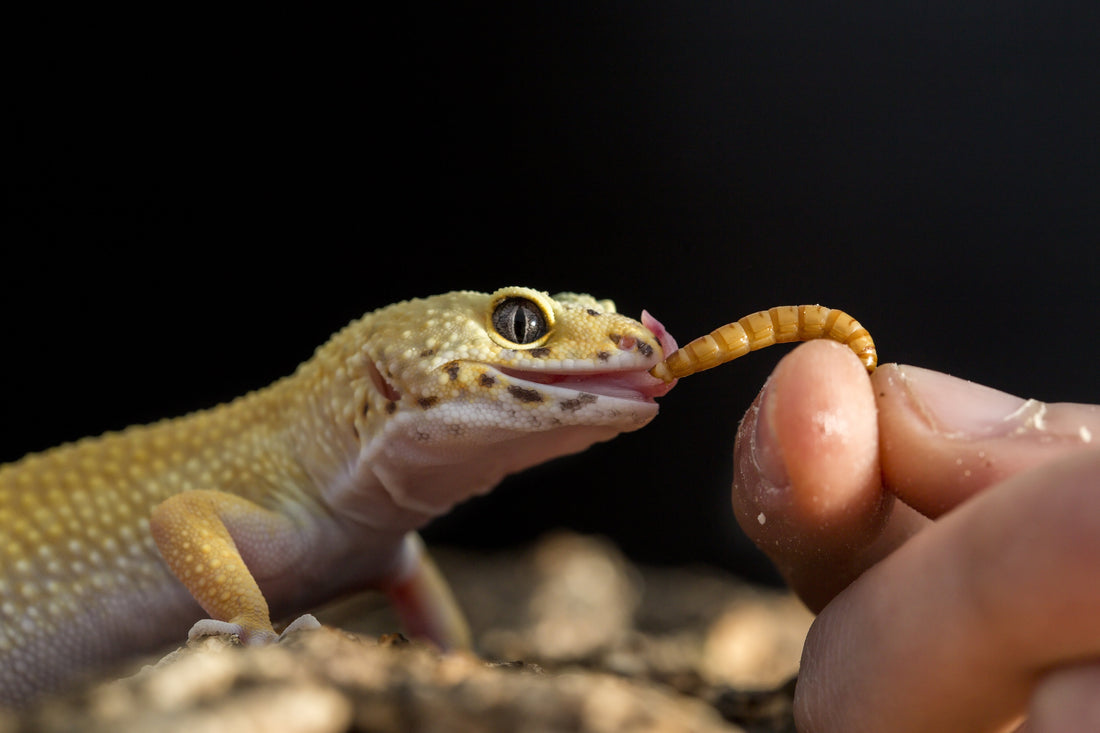It’s fairly inexpensive to feed an herbivore, but omnivores and particularly insectivores can get expensive. This can be a challenge to keep up with under normal circumstances, but the COVID-19 pandemic has made things particularly difficult for many owners of insect-eating reptiles thanks to job loss, national feeder insect shortages, and rationing procedures enacted by pet stores.
If you have found yourself struggling to keep your insect-eating reptile fed during these challenging times, here are some solutions that will help you save money on reptile food — and none of them involve rehoming your beloved pet.
Switch to Cheaper Feeders
This one should be the most obvious way to save money on feeder insects, and yet there seems to be a significant bias in our hobby against the inexpensive feeders. Crickets and mealworms in particular seem to have gained a bad rap, even though they’re perfectly good feeders. This is likely due to aggressive advertising by feeder insect breeders who claim that certain feeders (most notably dubia roaches and silkworms), are “superior” feeders. Some people even go so far as to imply that if you feed crickets to your reptile, you’re guilty of criminal neglect.
Here’s the facts: Crickets are not bad feeders. Mealworms are not going to kill your lizard. And when you’re on a tight budget, crickets and mealworms can be bought for pennies per bug, and are perfectly fine to use as feeders. Crickets may not be as large or as high in protein as dubia roaches, but that’s okay. Mealworms may not be as soft-bodied as silkworms, but they’re certainly not high enough in chitin to cause impaction in an otherwise healthy reptile.
Black soldier fly larvae have a better reputation than crickets and mealworms, as they're well-known for their nutritive value and especially their calcium content. Best of all, they're comparable in cost to crickets, and easier to care for. This makes them a great feeder to use regularly without having to worry about breaking the bank.
Superworms don’t have balanced enough nutrition to be suitable for use as “staple” feeders, but they are cheap and reasonably nutritious aside from the high fat and phosphorus content, so they’re good to use occasionally for variety.
DIY Your Gutload
You don’t have to use an expensive gutload to make sure that the insects you’re offering to your reptile are nutritious. Most feeder insects will do just fine with a variety of nutritious vegetables like kale, collard greens, mustard greens, bell pepper, carrots, and squash. Add occasional fruits like berries for extra vitamins. Sprinkle the fruits and veggies with your reptile’s calcium and multivitamin powders to help make the nutrition more balanced. Offer a bit of dog kibble now and then as a source of protein — many pet stores carry small sample bags of dog food for cheap or even free.
If you’re not comfortable with DIY-ing your feeders’ food, we sell 4oz bags of our special Dubia Diet for just $1.99 per bag.
Use a Rotation
If you can afford it, you can expand the rotation of feeders from crickets, mealworms, and superworms to include your favorite dubia roaches, hornworms, silkworms, and butterworms. Offering as much variety as possible is always best practice, and you’ll still save money since you’re not using the more expensive feeders as often.
The good news is that certain larger feeders, like dubia roaches and late-stage hornworms, "fill up" your reptile faster than smaller feeders like crickets and mealworms. This means that you don't have to spend as much on them to make sure your reptile has a full stomach.
However, please note that if you can’t afford a large rotation and you need to stick to the cheapest bugs for the short-term, that’s okay and you’re not a bad reptile owner.
Breed Your Own Bugs
While we don’t recommend breeding your own feeders, it is a good way to save money on feeder insects if you have several insect-eating reptiles to keep up with.
Mealworms and superworms are easy to house and breed, and you can feed both the worms and adult beetles to your pet! The beetles have a different ratio of nutrients, creating more nutritional variety for your reptile’s diet, and the chitin from their hard shells is a good source of roughage. Plus, many insectivorous reptiles eat beetles as a big part of their diet in the wild, and seem to enjoy hunting them.
Dubia roaches are also easy enough to house and breed as long as you feed them properly and have a reliable heat source. However, you do need to be careful with breeding dubias, as it’s common for people to develop an allergy to dubias with frequent handling and exposure. To reduce the risk, keep your dubias in a well-ventilated area, and wear gloves and a respirator when you need to interact with your colony.
If you are worried that you will have to rehome your pet reptile because you’re having a hard time keeping them fed during these challenging times, give these strategies for saving money on reptile food a try before giving up. We’re all in this together, and it won’t last forever.











